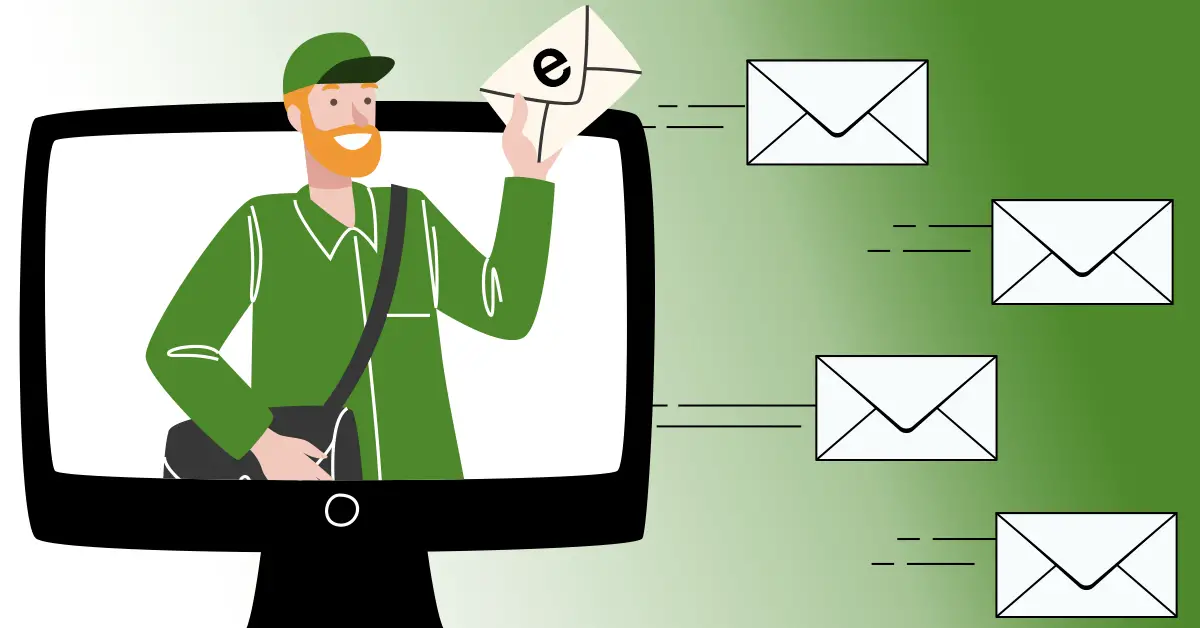In today’s digital age, email marketing has emerged as a vital strategy for businesses to engage with their audience, build brand loyalty, and drive conversions. Here, we’ll provide an in-depth understanding of email marketing, exploring its definition, benefits, and key strategies for success for publishers in 2023.
Email marketing refers to the practice of sending targeted messages and promotional content to a group of individuals via email. It allows businesses to connect with their existing customer base, nurture leads, and establish long-lasting relationships. According to a recent survey by Litmus, email marketing has an average ROI of $36 for every dollar spent, making it one of the most effective marketing channels available.
As a publisher and email marketer for many years, I was able to build an expansive email list (about 125,000+ strong in just over 3 years), as well as above-average open and click-through rates. I was also able to start creating significant income through email marketing, earning thousands of dollars a month through savvy automations and email customization. This stuff works, if you know how to work it.
There are countless benefits of email marketing, especially as generative AI and tools like ChatGPT make content easier to write than ever. First, email marketing enables businesses to directly communicate with their target audience, bypassing the limitations of social media algorithms. Recent research by Oberlo shows that the number of global email users is around 4.37 billion in 2023 (with an expected growth rate of 2–3% each year), making email one of the most trusted and widespread ways people consume content, ensuring a wide reach for email campaigns. Moreover, personalized and well-crafted emails can significantly enhance customer engagement and response rates.
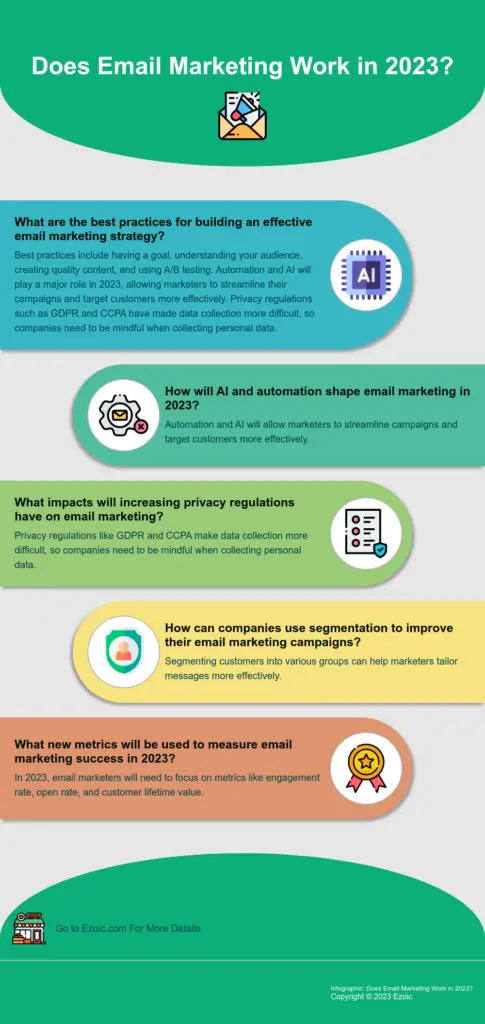
Compared to traditional marketing channels, email marketing is also highly cost-effective. The expenses associated with designing and sending emails are significantly lower than other forms of advertising, such as print or TV. Additionally, targeted segmentation allows businesses to tailor their messages to specific customer segments, improving campaign efficiency.
As far as conversion rates and revenue generation is concerned, email marketing is a proven driver of success. As Influencer Marketing Hub revealed, email marketing revenue should reach an estimated $11 billion worldwide by 2023. Very few channels allow creators to send messages, sales pitches, and updates with a simple click and expect a respectable size of their audience to see it (at least, without having to pay for such an effect). Effective email campaigns can encourage recipients to take desired actions, such as making a purchase, signing up for a service, or downloading content.
The key to unlocking the revenue and audience potential of email marketing is through building a quality subscriber list. It is essential to obtain permission from recipients to send them emails and ensure the list consists of individuals genuinely interested in the products or services offered, especially in countries or regions with stricter laws on privacy and data share, like Europe implementing their GDPR program to further protect residents’ data. Employing lead generation tactics like opt-in forms, gated content, and social media promotions can help expand and maintain an engaged subscriber base.
The heart and soul of email marketing lies in connecting with your audience, crafting compelling and personalized content that people actually look for, open, and read on a consistent basis. Countless studies have shown that low email engagement can lead to email platforms (like Gmail and Yahoo!) to begin automatically labeling your emails as “spam,” preventing your audience from ever seeing your content. Conversely, high open rates encourage these email platforms to prioritize your emails and ensure the audience gets the message. This is especially important when it comes to mobile devices, which account for 46% of all email open rates.
By leveraging customer data and segmentation, businesses can create tailored messages that resonate with recipients’ needs and preferences. Personalization can include using the recipient’s name, offering customized product recommendations, or sending targeted promotions based on past purchases or browsing behavior.
Here, we’ll go over what email marketing means in 2023, how to set up high-converting email systems, and how to truly connect with your audience that no AI can match.
What Is Email Marketing in 2023?
In the past, email marketing was a blunt, mass-produced, one-size-fits-all marketing scheme that aimed to send out as many messages as possible to as many people as possible. Companies and corporations would send the same sales pitch to as broad of an audience as possible, offering deals, discounts, and special messages.
It was a bit like the classic Homer Simpson telemarketing racket, where he sent the same recorded voiceover to everyone in town, hoping to make a quick buck:
Now, the internet and technology have become hyper-specific, offering people about as unique of an experience as possible. As we’ll talk about more in detail below, personalization really matters. As Salesforce recently revealed, 66% of consumers expect companies to understand their unique needs and expectations, and 52% expect all offers to be personalized. “This sentiment shows that it’s no longer enough to apply a ‘one-size-fits-all’ approach — companies need to leverage data and behavioral science to determine what the consumer wants and when they want it,” explained Forbes about the issue.
The most successful email marketing strategies in 2023 will rely heavily on getting as customized and personalized as possible with your audience.
First, Create a Lead Magnet
Many email software tools provide seamless integration options for your website, allowing you to incorporate email capture features such as pop-ups, in-line forms, or dedicated landing pages. These integration methods enable you to collect valuable email addresses from your website visitors.
To effectively and rapidly expand your email list, it is essential to prioritize the conversion of your website traffic into subscribers. Make joining your email list the primary call to action (CTA) for all visitors to your site. While you may consider diversifying your revenue streams in the future, for now, focus on encouraging people to join your list. A strong, active email list will inherently increase return visitor ratio, increase the probability of higher email open rates (more engagement = more visibility), and significantly help your ability to earn more overall site revenue.
To entice readers to provide their email addresses, it is important to offer them something of value — real value — in exchange. A generic offer like “free access to your Sunday newsletter” is unlikely to generate significant interest. Instead, aim to provide something highly appealing. Consider options such as:
- Offering a discount on your services
- Providing a valuable PDF or video resource
- Delivering exclusive training or tutorials
- Granting access to a chapter from your eBook
Make the sign-up process a no-brainer for your readers by ensuring it is straightforward and easily accessible within your content. Place the call-to-action prominently to capture the attention of your audience and maximize conversions.
Here are some good examples I found:
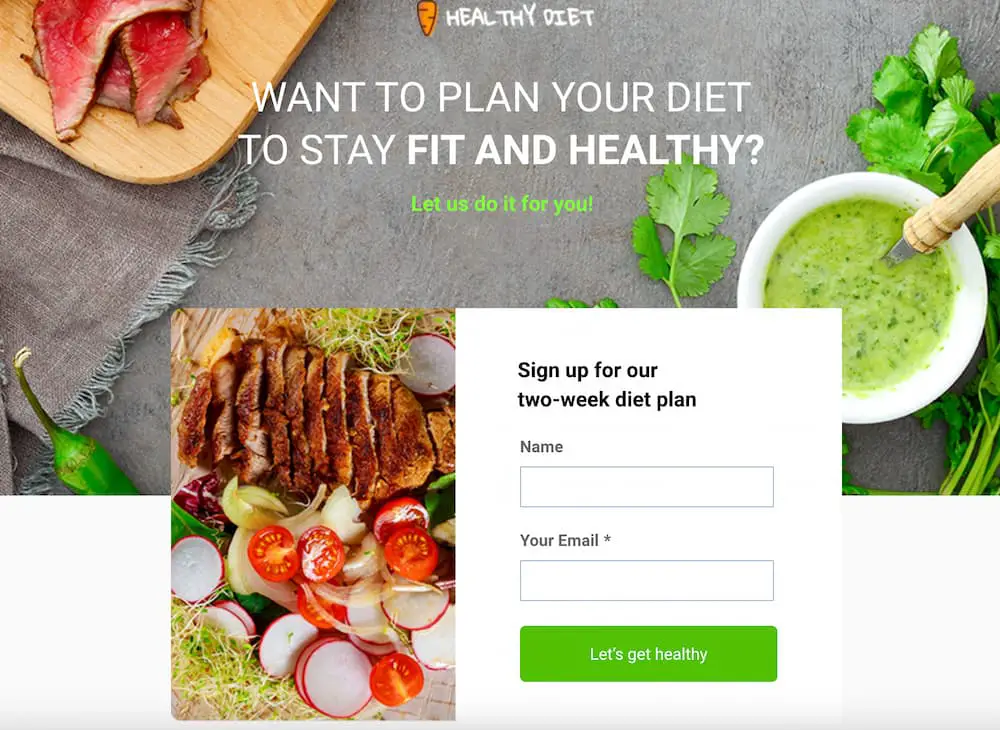
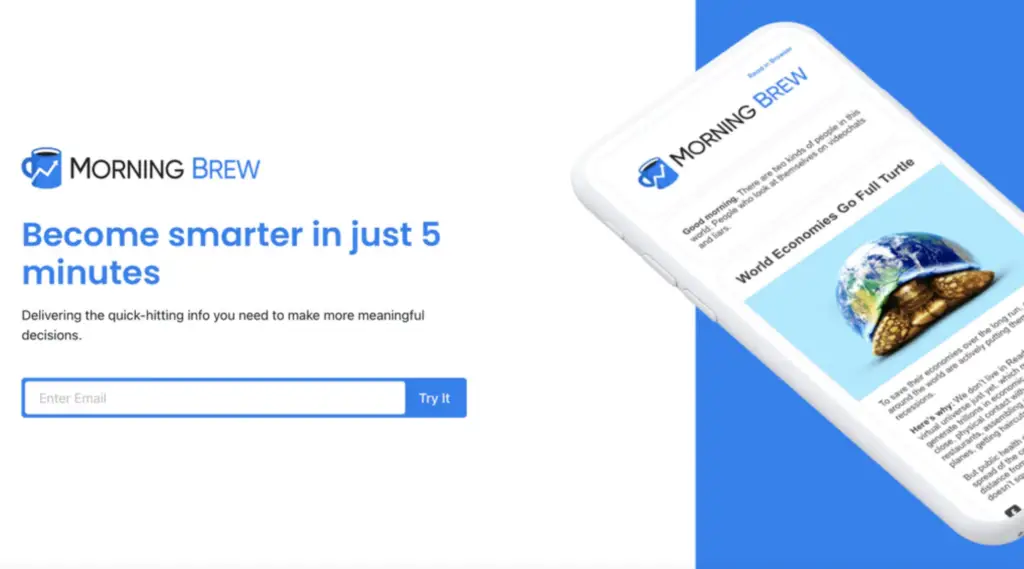
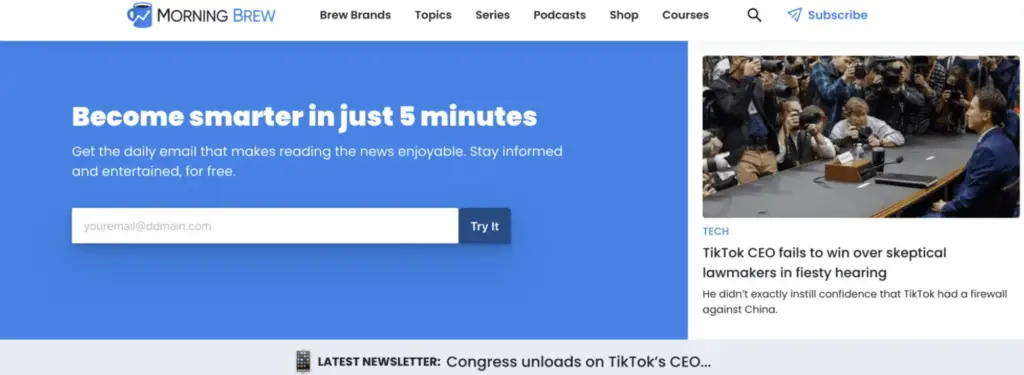
These landing pages are clean, concise, and have real value in their giveaways, and have a single call to action that inspires users to act.
How to Increase Email Open Rates
As the great British advertising tycoon David Ogilvy famously said, “On the average, five times as many people read the headline as read the body copy. When you have written your headline, you have spent eighty cents out of your dollar.”
If you do not have a great headline, it probably doesn’t matter how great your article is, since very few people will probably click on it.
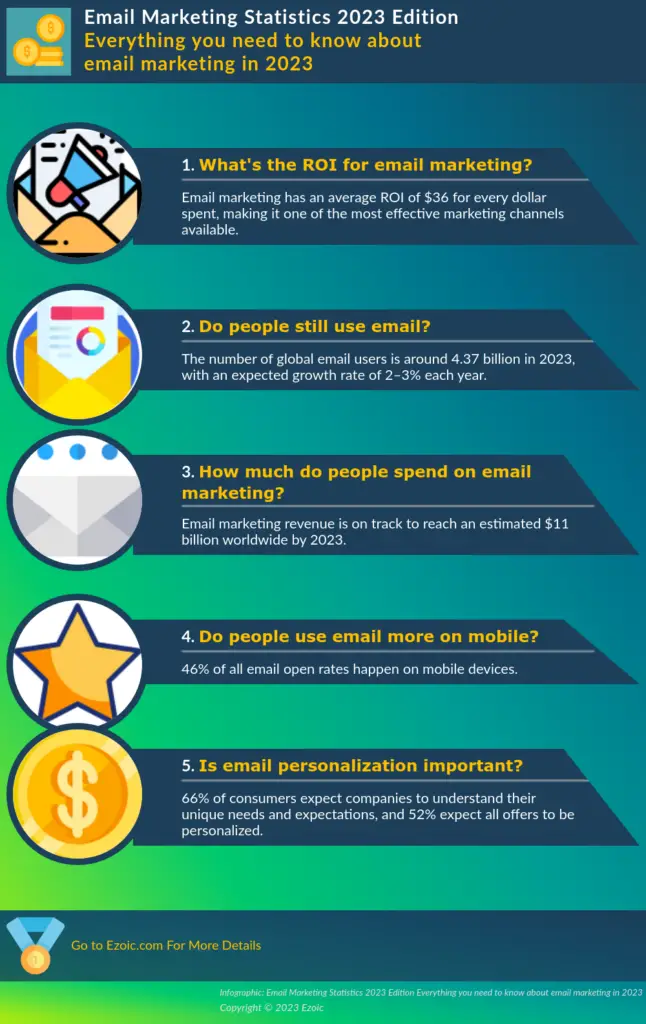
After gaining tens of thousands of email subscribers and having almost twice the industry average open rate and click-through rate, I realized one simple lesson about how it all worked: if I had great headlines, I got clicks.
Of course, I had to back up those clicks with great content that had real value (there’s no article in the world that could back up catchy headlines like “How to Make On Million Dollars in 24 Hours” or “How to Lose 50 Pounds in One Week”). But the premise here is simple: great headlines will help increase your open rates.
We’ll go more into A/B testing in a bit, but you need to understand this principle first before we move on. Great content isn’t enough: the packaging has to be high-quality, too.
The truth is, anyone can get lucky and write a viral headline that gets a lot of clicks. But it’s very difficult to consistently write great headlines or subject lines. Companies and organizations pay a lot of money to professional writers who can write this content for them, and will continue to do so even in the age of AI content.
The real trick of increasing open rates is to become a person — not a business, not a brand, not a robot — people want to hear from. Everyone’s email inbox is usually full of mindless sales pitches, cookie-cutter listicles, and messages from strangers. There’s a reason why the average email open rate across virtually every industry is around 15–20% — most emails just aren’t great. But if you take the time to learn your audience, give them real value, and show them you’re a real person typing on the other end, you’re sure to see increased email open rates from your messages.
How to Increase Email Click-Through Rates
Once you’ve developed great headline writing skills (here’s a whole article Ezoic wrote on how to develop killer headlines) and are consistently getting higher open rates, it’s time to seal the deal and actually get people to click your email and get to your site — which is where the real revenue is.
Industry click-through rates vary, but the average across every industry is usually around 1–3%. This means on average, if you have a thousand people on your email list, maybe 200 of them will open your email, and 2–6 of them might click on a link. That’s not that much (especially for all the work you did collecting 1,000 email addresses!). But remember, these are averages, and you can absolutely stand out from the crowd to receive truly enormous click-through rates.
As a publisher, I was averaging about 35–40% open rates and about 5–6% click-through rates (both about 2x the industry average); this meant that if I sent out an email to 50,000 of my subscribers, about 20,000 would open my email, and I could expect hundreds of people to click on the articles, seeing my content, viewing my sales pitches, checking out my products, whatever.
My email list became the lifeblood of my business; if I had a slow month, I could whip up a quick sales pitch and make up the difference based solely on extremely high reader engagement. I could leverage my audience to help others promote their work (and get a cut of the profits). There’s a reason why Twitcher streamer Felix “xQc” Lengyel just inked a contract worth around $100 million dollars for his brand; advertisers and organizations obviously believe his millions of subscribers are worth a fortune in advertising revenue.
The key is having a reliable content strategy in your emails. This means:
- Consistency
- Quality
- Coherency
If you’re giving readers a new call to action every week (“Follow me on Facebook!” “Buy my online course!” “Read my articles!” “Listen to my podcast!”), odds are most readers will experience confusion (and even a bit of annoyance) if you break the “one CTA per page” theory. The best way to get great at several things every publisher needs to do (social media, content, email marketing, graphic design, etc.) is not to try everything at once, but to master each area one at a time.
For your emails, focus on only having one call to action.
There are also a few things that go without saying, but I’ll mention them here. If you want increased click-through rates:
- You need quality subscribers, not one-offs or fake emails people reserve for spam. You need real people using their main email address, which means you need to give quality content to get that.
- You need high-quality content. If your emails regularly feature broken images/links, typos, inconsistent fonts, awkward colors, etc…good or bad, people will naturally believe your site is a reflection of your content. Think of it this way: if it looks like it belongs in someone’s spam inbox, then it probably does.
- You need to be consistent. If you send out a random email every once in a while — sometimes one a week, once a month, once a quarter — you won’t see high click-through rates. Your audience needs to believe they can rely on you to get quality content in a timely manner.
- You need a high-quality email marketing tool. Don’t try and copy/paste/BBC your entire email list from your personal email, or use a free tool filled with random ads and broken features. If you’re a serious publisher, you’ll take this part of your business seriously.
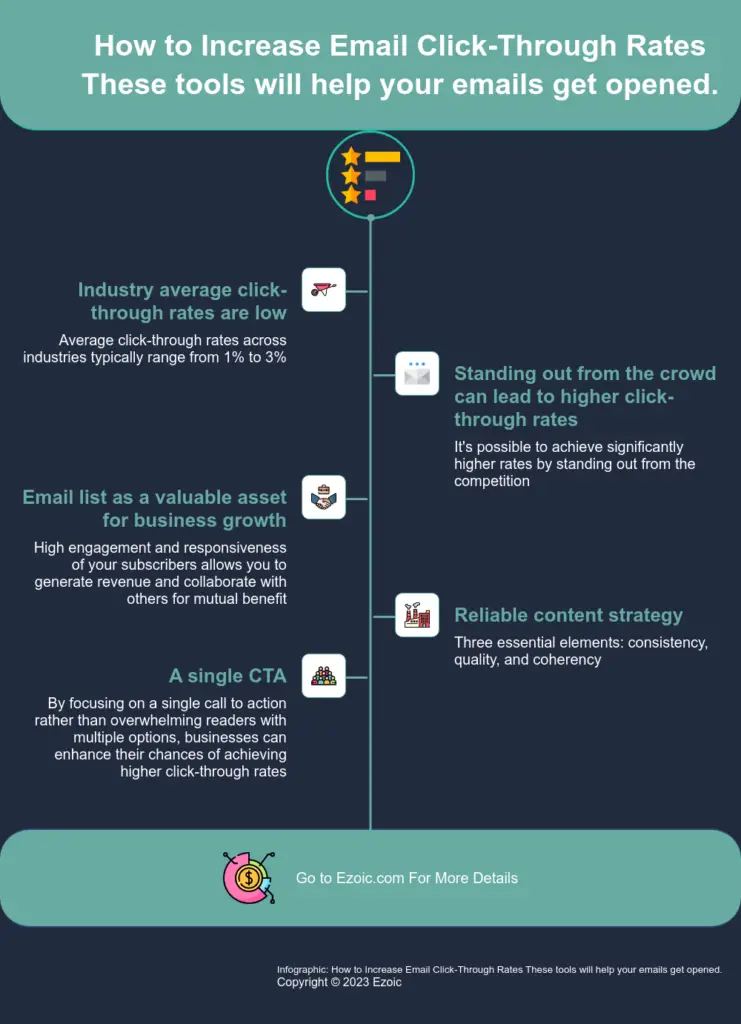
How to Use AI To Improve Your Email Marketing
In the past, publishers had to rely on their own knowledge and expertise to craft email content. It was limited, and largely a guessing game based on opinions and trends.
With AI, you can remove the guesswork and find highly-optimized email content, subject lines, and strategies in seconds. Here are some practical steps to leverage AI and optimize your email campaigns, helping to improve open rates, click-through rates, and overall customer satisfaction.
AI empowers email marketers to segment their subscriber lists more effectively based on various parameters, such as demographics, purchase history, and browsing behavior. By analyzing vast amounts of data, AI algorithms can identify patterns and preferences, allowing you to tailor your emails to specific customer segments. This personalized approach increases the relevance of your content, resulting in higher engagement and conversion rates.
Of course, there’s pure content generation. AI enables marketers to create dynamic email content that adapts to individual subscribers. By leveraging AI-powered content generation tools, you can automatically customize elements such as subject lines, product recommendations, and even entire email templates. This level of personalization significantly boosts user engagement and improves the chances of converting leads into customers.
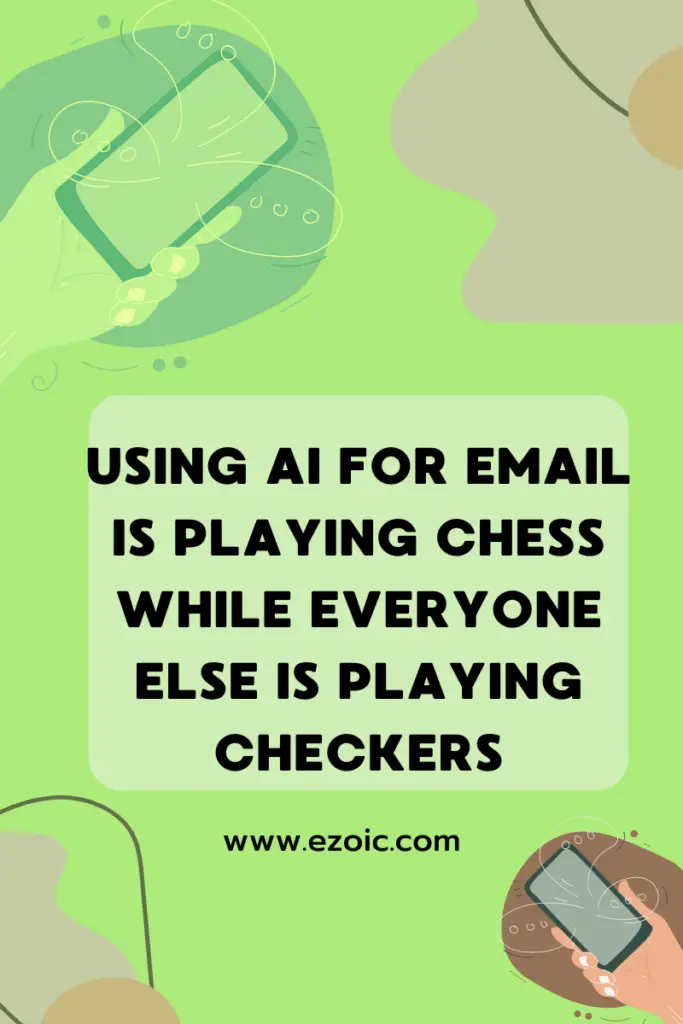
With AI-driven predictive analytics, you can anticipate customer behavior, including their likelihood to open an email, click on links, or make a purchase. By analyzing historical data and user patterns, AI algorithms can predict the optimal timing, frequency, and content of your email campaigns. Leveraging these insights allows you to send emails when recipients are most likely to engage, thereby maximizing your campaign’s effectiveness.
Automation has long been a powerful strategy used in email marketing, turning a basic game of checkers into a complex game of chess. Virtually every email platform offers automation features that streamline your campaign management. By setting up triggers and rules, you can create automated email sequences based on user actions or predefined conditions. These automated workflows save time and effort while delivering timely and relevant messages to subscribers. Whether it’s onboarding new customers, nurturing leads, or sending personalized follow-ups, AI-powered automation ensures consistent communication.
Finally, there’s a plethora of testing you should incorporate into your marketing content. AI facilitates A/B testing on a larger scale by automating the process and analyzing results more efficiently. By testing different subject lines, content variations, or call-to-action elements, AI algorithms can identify the most effective combinations to maximize engagement and conversions. Continuous optimization based on AI-driven insights allows you to fine-tune your email marketing strategy, ensuring your campaigns consistently deliver optimal results.
Integrating AI into your email marketing strategy provides a range of benefits, from enhanced segmentation and dynamic content generation to predictive analytics and automation. By leveraging the power of AI, you can optimize your email campaigns, improve customer engagement, and drive higher conversions, ultimately boosting the overall success of your digital marketing efforts.
How to Nurture and Retain Subscribers
Once you do all the work to gain a new email subscriber, the work isn’t over; if you don’t effectively nurture and focus on the relationship, these subscribers are liable to stop reading your content — or unsubscribe altogether.
The first step to creating a great relationship with your subscribers is to send a warm welcome email that confirms they made the right choice by subscribing. Use this opportunity to introduce your brand, highlight the value they will receive, and set expectations for future emails.
Marketing agency ClickFunnels has a genius idea for welcome emails: a Soap Opera sequence. In this strategy, you send out a series of story-driven narrative emails that tell who you who, what your message is about, and how you can help subscribers, all while giving them value and introducing the possibility of upsells. How you do your welcome emails is up to you, but it has to be specific, genuine, and obviously written by a real person.
Consider creating an onboarding series of emails that gradually introduce different aspects of your business, products, or services. This series can help new subscribers become familiar with your brand and encourage them to engage further.
Leverage subscriber data to provide personalized product recommendations based on their previous purchases, browsing behavior, or preferences. Send targeted emails that suggest complementary products, highlight new releases, or offer exclusive discounts. By tailoring your recommendations to each subscriber’s interests and needs, you enhance their shopping experience and increase the likelihood of repeat purchases and long-term engagement.
You can also reward your email subscribers with exclusive content, promotions, or early access to new products or services. Create a sense of exclusivity and make them feel special for being part of your email list. This can include insider tips, industry insights, or limited-time offers. By providing unique benefits to your subscribers, you foster a sense of loyalty and encourage them to stay engaged with your brand.
Incorporate interactive elements into your emails to boost engagement. Encourage subscribers to participate in surveys, quizzes, polls, or contests that provide valuable insights and help you better understand their preferences. Interactive content not only keeps subscribers entertained but also encourages them to actively interact with your brand. This level of engagement can lead to increased loyalty and a higher likelihood of staying subscribed.
Finally, make sure to have consistent and regular communication with your audience. However, it’s important to strike a balance and avoid overwhelming them with excessive emails. Segment your subscriber list based on their preferences, engagement levels, or purchasing behavior. By tailoring your content and frequency of emails to each segment, you ensure that subscribers receive relevant messages, increasing their satisfaction and likelihood of staying subscribed.
Nurturing and retaining email subscribers requires a combination of targeted communication, personalization, and valuable content. By implementing these strategies, such as providing a warm welcome, offering personalized recommendations, exclusive content, and interactive experiences, you can build strong relationships with your subscribers, foster loyalty, and create a thriving email marketing channel for your business.
How Do I Create a Paid Email List?
Creating a paid email list can be a lucrative strategy for monetizing your subscriber base while providing exclusive content and benefits to your most dedicated audience. This article outlines a step-by-step guide to help you effectively build and leverage a paid email list, generating revenue and fostering stronger connections with your subscribers.
Best-selling author Ryan Holiday once commented that every book sale between this audience and him was a bit like a knife fight —whether you’re an established influencer or a new author, it’s hard to get people to buy content!
But in the age of AI-written content and the influx of content creators publishing enormous bodies of work in every industry, paid content has become more appealing on the basis of its quality, exclusivity, and rarity. Countless writers have made the switch to paid email newsletters, including long-time author and writer Jeff Goins, who told his 100,000+ email subscribers that he’d be putting all his future content behind a paywall. After the switch, tens of thousands of people began paying for his content!
There are several ways to begin setting up your own paid email newsletter.
First, you need to define your value proposition: why would people pay you for information they might be able to get for free somewhere else? Before launching a paid email list, it’s crucial to define the unique value you will offer to subscribers. Consider what exclusive content, expertise, or benefits you can provide that are not available elsewhere. Whether it’s premium educational materials, insider industry insights, personalized consultations, or access to exclusive events, your value proposition should entice subscribers to pay for the added value they will receive.
Then, understand that not every subscriber (or even the majority) will want to pay for content. That’s why segmentation plays a vital role in creating a paid email list. Analyze your existing subscriber base and identify those who are most likely to be interested in premium content or services. Consider factors such as engagement level, past purchases, or specific interests. By targeting a specific segment, you can tailor your paid offerings to their needs and preferences, increasing the chances of conversion and subscriber retention.
To further improve your chances of success, develop compelling paid offerings. Create a range of compelling paid offerings that align with your value proposition. This could include tiered subscription plans, one-time purchases, or access to exclusive online courses or resources. Ensure that your paid offerings deliver on the promised value and are priced appropriately. Consider offering additional perks such as early access to content, exclusive discounts, or personalized support to enhance the attractiveness of the paid email list.
Once you have all this ready, it’s time to choose a reliable payment system to handle transactions securely, then Integrate the payment system into your website or landing page dedicated to promoting your paid email list. The landing page should clearly communicate the benefits, pricing, and features of the paid offering, along with compelling calls-to-action. Make the signup process easy and intuitive, minimizing any friction that could deter potential subscribers.
Building a paid email list requires careful planning, segmentation, and compelling offerings that provide unique value to subscribers. By defining your value proposition, segmenting your audience, and effectively promoting your paid email list, you can monetize your subscriber base, strengthen customer relationships, and create a sustainable revenue stream for your business.
In Conclusion
Email marketing continues to be a powerful tool for businesses to engage with their audience and drive conversions in 2023. With an average ROI of $36 for every dollar spent, email marketing is proven to be highly effective and cost-efficient. Building a quality subscriber list is key to unlocking the revenue potential of email marketing. Employing lead generation tactics and obtaining permission from recipients ensures that the email list consists of individuals genuinely interested in the products or services offered.
Personalization plays a crucial role in email marketing success. By leveraging customer data and segmentation, businesses can create tailored messages that resonate with recipients’ needs and preferences. Crafting compelling and personalized content helps improve open rates and customer engagement.
To increase email open rates, attention should be given to crafting great headlines that grab the recipients’ attention. Investing in high-quality content and being consistent in delivering value to subscribers is also important for boosting click-through rates. Leveraging AI can significantly optimize email marketing campaigns. AI-powered tools can help with segmenting subscriber lists, generating dynamic email content, predicting customer behavior, automating workflows, and conducting A/B testing for continuous optimization.
By incorporating these strategies and leveraging AI, businesses can take their email marketing to the next level, reaching their target audience effectively and driving meaningful engagement that leads to conversions.
